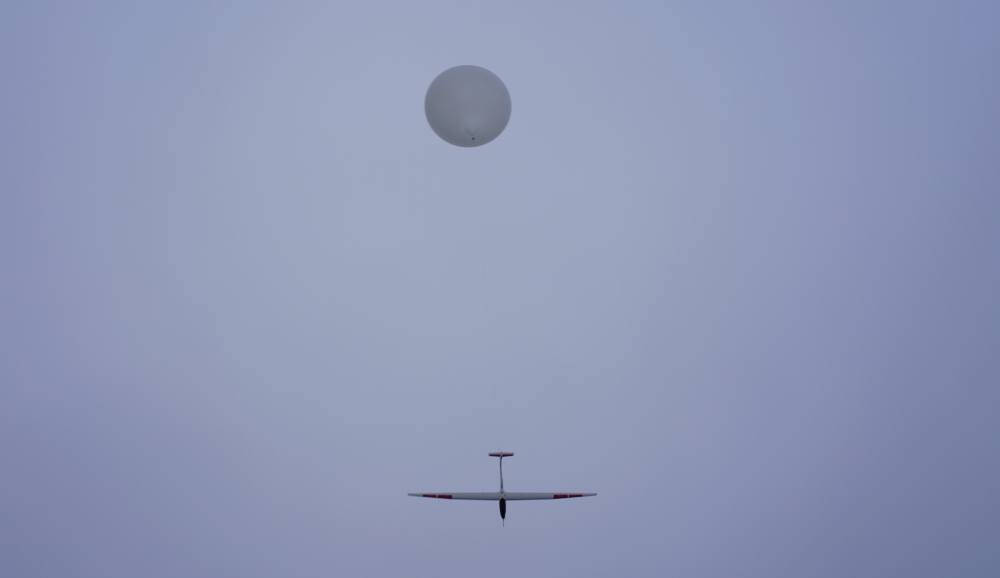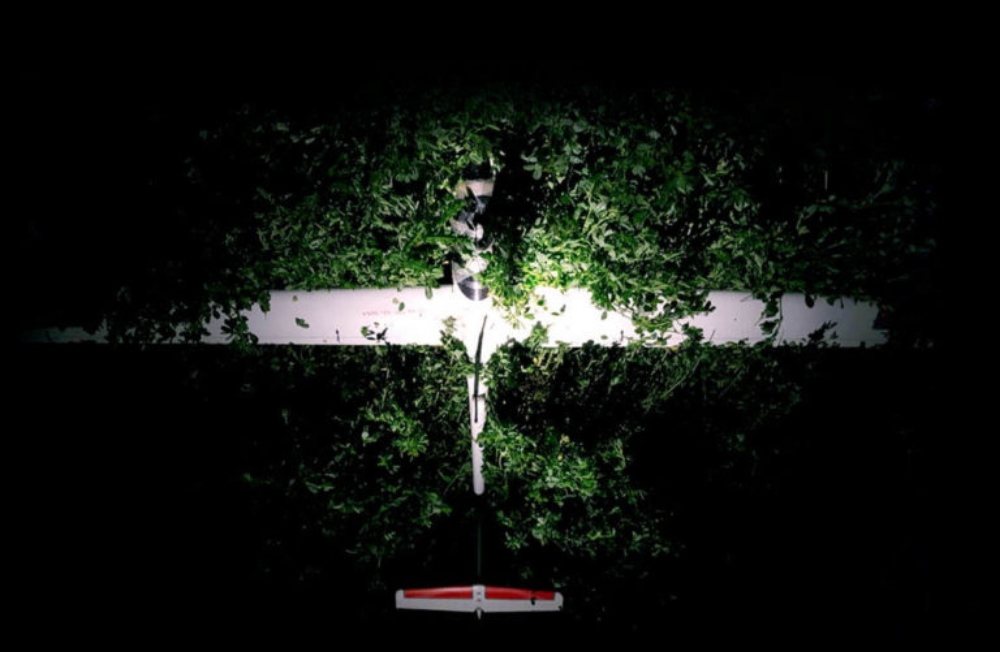and UAVOS have announced their pioneering flight of the HiDRON stratospheric glider. The HiDRON successfully reached a new altitude of 30 km (98,450 feet) breaking their previous 25km record. The flight demonstrated the team’s capability to perform beyond visual line of sight (BVLOS) operations with a UAV at high altitudes.
The August 2nd night flight was the first of two flights commissioned to test a new AMON Airglow detector from Stratodynamics client, the Slovak Academy of Sciences Institute of Experimental Physics.
This international collaboration is the culmination of 7 months of planning between Stratodynamics and lead physicists, Pavol Bobik, Simon Mackovjak, and UAV pioneer, UAVOS. The Slovakian team was searching for a cost effective method to allow the AMON Airglow detector to have a clear view of the zenith and the nadir while unencumbered by a weather balloon. The AMON is planned to be an ancillary instrument for EUSO-SPB2 (Extreme Universe Space Observatory) mission that will fly on a long duration NASA balloon flight in 2022.
The HiDRON offered the perfect solution for the campaign as it’s programmable flight path back enabled an unobstructed view upwards from the stratosphere, and returned the valuable instrument back to the launch location.
All went according to plan with the UAVOS ground crew in the early hours of Thursday August 2nd as the HiDRON was lifted by balloon to the 30km target altitude and released in -60° C (-76° F) stratospheric winds. Despite the harsh environment, the HiDRON performed well with real time data transmitting to the ground station during the 4 hour controlled descent.
In addition to the AMON detector, Stratodynamics and UAVOS used the flight opportunity to test and advance aspects of the HiDRON design including stratospheric flight dynamics, data links, and UAVOS’ Micro Version AP10.3 auto-pilot.
STRATODYNAMICS acknowledges funding contributions from LookNORTH to demonstrate BVLOS technology for unmanned systems.
A second AMON flight is scheduled for August 31 from the Canadian Space Agency’s STRATOS Balloon Base in Timmins, Ontario. This time the glider will be released from the Canadian Space Agency’s (CSA) scientific gondola at an altitude of 35 km, a new milestone for the HiDRON. The data collected during Timmins flight in 2019 will be used for comparison with the results from EUSO-Balloon mission that operated in the same region in 2014. This campaign represents a first in North America for a stratospheric glider releasing from a scientific gondola.
Gary Pundsack, CEO Stratodynamics Aviation Inc.:
“We are extremely pleased with the performance and outcome of this recent 30 km milestone. Stratodynamics has proven to be a valuable partner with the Slovak Academy’s investigations into nighttime airglow. Our unique method of collecting high-quality large datasets from hard to reach locations offers clients new, cost effective access to stratospheric altitudes. We look forward to the follow up launch with our collaborators at the Canadian Space Agency.”
PI, Dr. Pavol Bobik, scientist at Slovak Academy of Science:
“We appreciate flexibility, excellent customer support, professionalism and willingness of Stratodynamics during our campaign”.
UAVOS Board Member and CEO Aliaksei Stratsilatau:
“HiDRON is a real solution to advance the important research around climate change and other atmospheric chemistry problems. The HiDRON provides solutions for tough problems that affect all of humankind, which is why it is such a necessary platform for researchers.”
Source: Press Release


